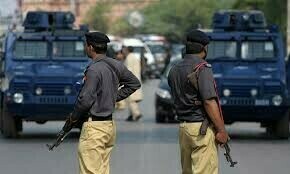Pakistan is a poor country. Not just because of actual poverty but also because our richest do not hold a candle to the world’s richest. Even accounting for the top-most tier of society, Pakistan’s share of world wealth (defined as assets minus debt) in 2018 was only 0.1 per cent.
Read: Who’s the richest of them all?
India, on the other hand, with 16 people on the Bloomberg Billionaires Index has nearly 2pc of the world’s wealth. Unsurprisingly, no Pakistani graces the 500-people list which is a daily ranking of the world’s richest people.
But global indexes do not tap the true reservoirs of the wealth of Pakistan’s richest.
The table compiled using Credit Suisse’s Global Wealth Database (GWD) 2018 is based on their researchers’ best guestimates. The dollar-denominated brackets have been converted to rupees at the current exchange rate. Logic dictates that there must be at least a hundred people in the above Rs7.85 billion category.
Take the example of Mian Muhammad Mansha. In 2010, he was on Forbes list of World’s Billionaires ranked at number 937. At $1 billion nearly a decade back, he is leaps and bounds ahead of Pakistan’s top wealth tier based on GWB.
A lesser known but potentially no less wealthy individual is Habibullah Khan, a self-declared billionaire in dollar terms.
A big player in the cement industry, owning a container terminal, shipping and logistics businesses and current owner of Karachi’s Hotel Metropole, Mr Khan belongs in GWD’s uppermost bracket of $500 million-plus; a bracket that the GWD database claims Pakistanis don’t belong in.
Global indexes do not tap the true reservoirs of the wealth of Pakistan’s richest
Hussain Dawood, chairman of the Dawood Hercules Group that owns Pakistan’s most visible private-sector conglomerate Engro Corporation, is another individual whose net worth most likely dwarfs the top-most wealth tier that GWD sketched for Pakistan.
Admittedly, his current shareholdings in Dawood Hercules and Engro Corp amount to less Rs5bn. But when one adds his myriad investments and assets, it is unlikely that he is not an occupant of the uppermost tier of Pakistan’s wealthiest.
Then there is Syed Babar Ali. Since the major shareholdings of Packages, IGI and Nestle Pakistan are owned by holding companies and one another, it is difficult to estimate the worth of his shares, much less actual wealth.
Suffice to say that his Nestle’s shares are worth over Rs7.3bn, not accounting for Packages and IGI’s approximately 18pc holding of Nestle’s shares. Bear in mind that just one share of Nestle is worth over Rs5,000.
Clearly, several individuals in the country have a net worth in hundreds of millions of dollars rather than the handful indicated by the table.
Ninty four per cent of Pakistan’s roughly 110m adults lie below the Rs1.6m (roughly $10,000) threshold, which encompasses most of us plebeians. Obviously, there is no single comprehensive source of information on personal wealth. No country has such records.
The GWD establishes the average wealth of a country, supplemented through econometric techniques, and constructs a pattern of wealth holdings using income distribution data. Keeping economic jargon aside, the list is based on estimates alone using econometric and regression techniques. It does not capture the true wealth of the elites of Pakistan.
What a person in each category established by GWD can afford is the writer’s own views.
The number of swimming pools dotted in various homes in Karachi’s Defence area may indicate that there are significantly more than 200,000 people in the table’s third wealth bracket.
While Arif Habib’s personal shareholdings in Fatima Fertiliser are valued at a measly Rs400m, the company had the strength to try and build a $2.6bn plant in Indiana, United States.
This is indicative of the financial strength of Pakistani businessmen that cannot be captured through economic tools used to tabulate international wealth indexes.
Sources say that there are families in Pakistan with the financial muscle to donate large enough amounts to prestigious US universities (such as Cornell University and the University of Pennsylvania) to ensure their names on buildings and wings. We live in a country where the true wealth of the richest is buried too deep to be listed on billionaires’ lists.
Published in Dawn, The Business and Finance Weekly, October 14th, 2019
















































